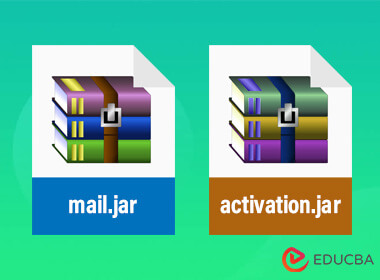
Receiving email in Java is the Store and Folder classes used in conjunction with MimeMessage, Session, and Transport classes. It is used for receiving emails and learning the JavaMail API’s email-sending stages. The emailreceive test class will make contact with the nearby email server, and account’s mails and display them to point out the ip address in the host config file for hostname and pop3 which is the preferred mail store protocol type.

Start Your Free Software Development Course
Web development, programming languages, Software testing & others
To learn about the email-sending stages of the JavaMail API, the emailreceive test class will make contact with the nearby email server, connect to the account’s emails, and display them to highlight the IP address in the host’s config file for hostname and pop3 is the preferred mail store protocol type.
Receiving email is accomplished using the Store and Folder classes in conjunction with MimeMessage, Session, and Transport classes. The program receives email messages as HTTP requests. We must associate email addresses with servlets in the application setup in order to process incoming email messages, and we must then include the servlet code in the web app. The proper servlets receive HTTP requests from the incoming email to handle the requests and send the response.
We have examined using the Java Mail API to send emails. With only one protocol (SMTP) to learn, sending emails was rather straightforward. POP3 and IMAP are the two protocols used for reception, nevertheless. The more traditional POP3 protocol gives a single inbox with a single queue of mail messages. The more recent standard, IMAP, displays mail as entries in a hierarchy of folders, one of which will be an inbox.
POP3 and IMAP Provider implementations, as well as their secure counterparts, POP3S and IMAPS, are included with Java Mail.
We must load the following two jar files in order to send emails using the JavaMail API:

We can incorporate the JavaMail API implementation, which is totally free and open source, into the product. This edition is also to be featured with SMTP, POP3, and IMAP providers. A Jakarta EE API called Jakarta Mail that is mainly used to send and receive email through SMTP, POP3, and IMAP protocols. The Java EE platform includes a built-in version of Jakarta Mail then however Java SE users can alternatively be utilized an extra package. In the most recent version which was released last few months and also another open source Java Mail implementation which is GNU JavaMail, supports only version 1.3 of the JavaMail specification but offers only the free NNTP backend, enabling the use of this technology for reading and sending newsgroup articles.
Given below is the example mentioned:
Code:
package TestNG;
import java.io.IOException;
import java.util.Properties;
import javax.mail.Folder;
import javax.mail.Message;
import javax.mail.MessagingException;
import javax.mail.NoSuchProviderException;
import javax.mail.Session;
import javax.mail.Store;
import com.sun.mail.pop3.POP3Store;
public class NewTest{
public static void receiveEmail(String hst, String stype,
String user, String password) {
try {
Properties props = new Properties();
props.put("mail.store.protocol", "pop3");
props.put("mail.pop3s.host", hst);
props.put("mail.pop3s.port", "995");
props.put("mail.pop3.starttls.enable", "true");
Session sess = Session.getDefaultInstance(props);
Store st = sess.getStore("pop3s");
st.connect(hst, user, password);
Folder emailFolder = st.getFolder("INBOX");
emailFolder.open(Folder.READ_ONLY);
Message[] messages = emailFolder.getMessages();
for (int i = 0; i < messages.length; i++) {
Message message = messages[i];
System.out.println("Welcome To Email");
System.out.println("Email Number " + (i + 1));
System.out.println("Subject: " + message.getSubject());
System.out.println("From: " + message.getFrom()[0]);
System.out.println("Text: " + message.getContent().toString());
}
emailFolder.close(false);
st.close();
} catch (NoSuchProviderException e) {e.printStackTrace();}
catch (MessagingException e) {e.printStackTrace();}
catch (IOException e) {e.printStackTrace();}
}
public static void main(String[] args) {
String host = "pop.gmail.com";
String stypes = "pop3";
String username= "[email protected]";
String password= "xodbizaoiqijifre";
receiveEmail(host, stypes, username, password);
}
}Output:

Explanation:
Given below are the FAQs mentioned:
Answer:
Using the JavaMail API to retrieve or receive a basic email with underlying protocols have no bearing on this layer at all.
Answer:
Among that IMAP is an advanced protocol for receiving messages.
Answer:
The program receives email messages as HTTP requests. We must associate email addresses with servlets in the application setup in order to process incoming email messages, we should include the servlet code in the app. Then the proper servlets receive HTTP requests from the incoming email and handle them.
The above is the detailed content of Receiving Email in Java. For more information, please follow other related articles on the PHP Chinese website!




